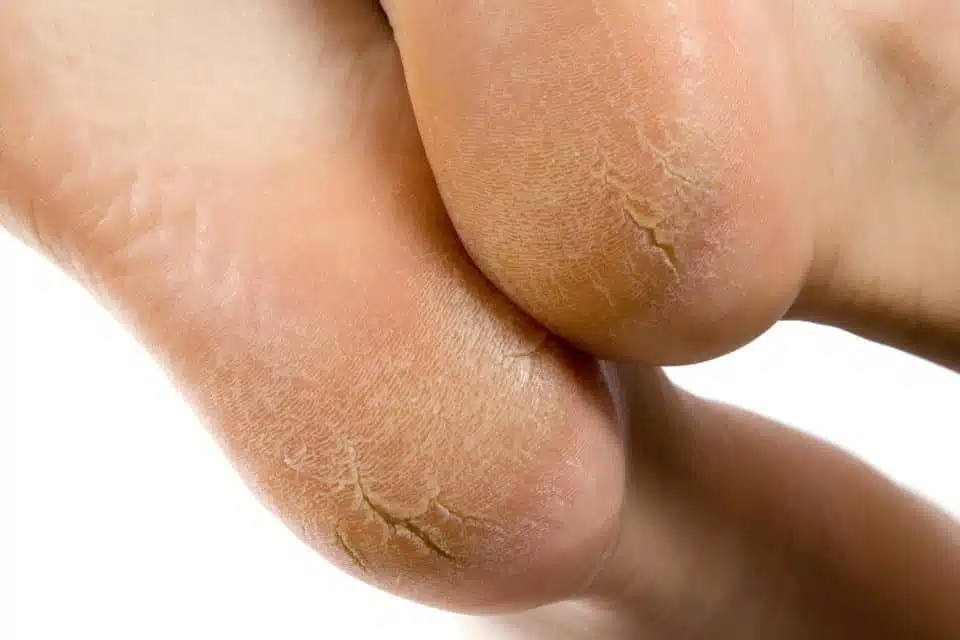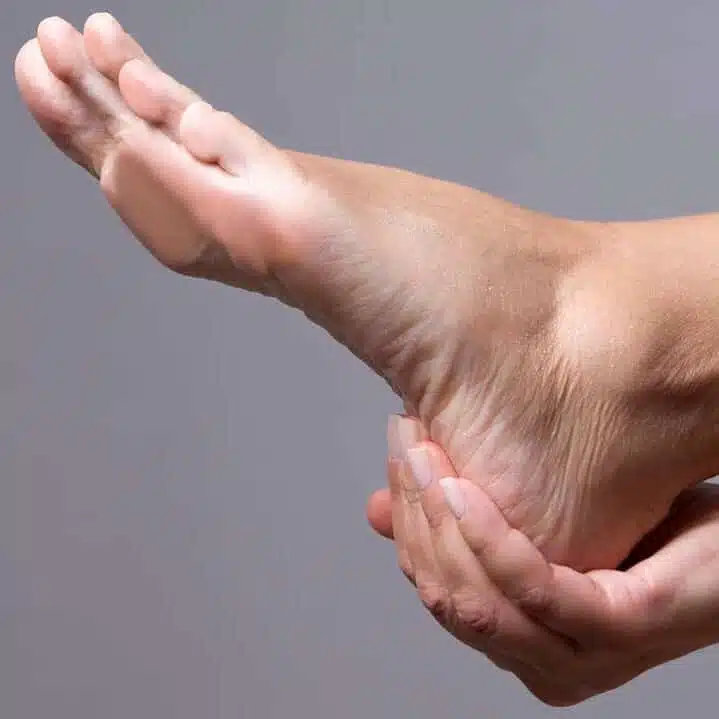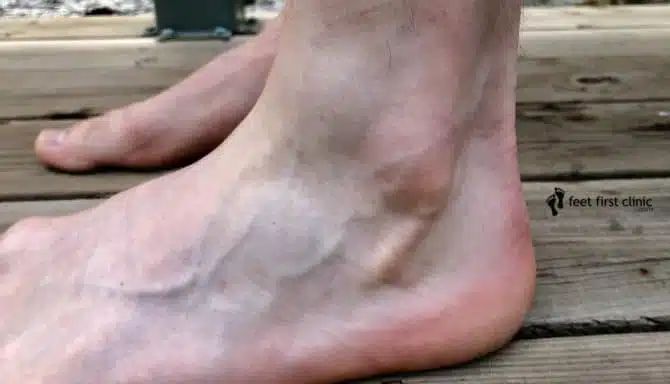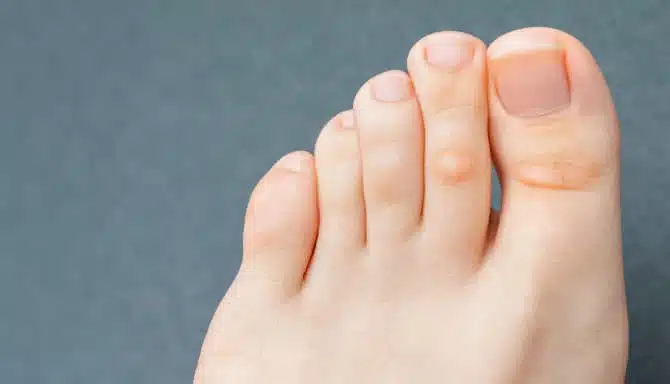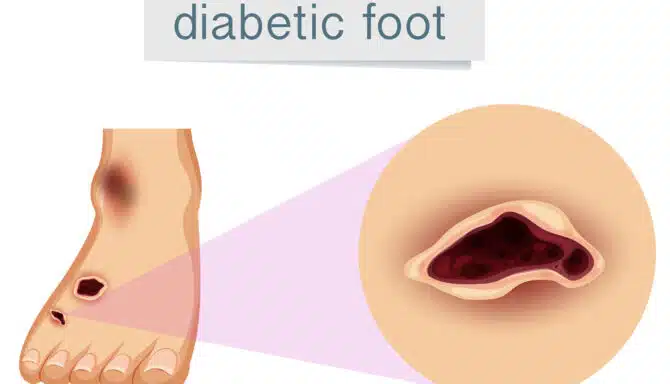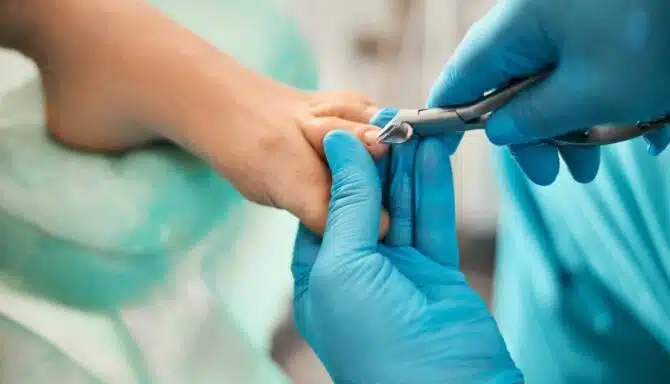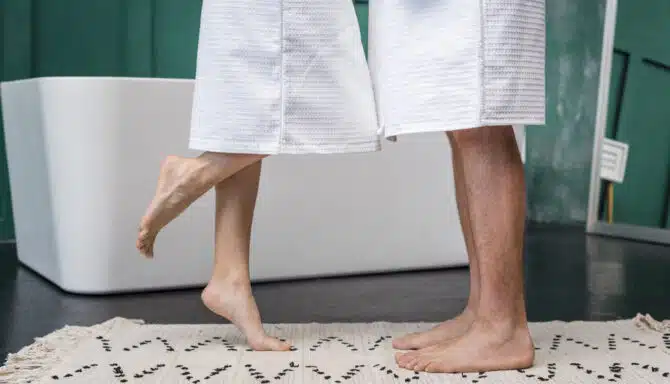Cracked heels (heel fissures) are a common foot condition that can affect anyone. The main culprit behind cracked heels is dry skin. Cracked heels are often worse in the winter when the outdoor air is dry and the heaters are blasting full force at home, at work, and in public.
Sometimes hectic lifestyles and the daily grind can get in the way of maintaining proper foot care to protect your feet from dry skin. Luckily, you have the option to see a Toronto foot specialist for your cracked heels. There are also many products and foot care tips you can use to manage and prevent them.
Let’s discuss cracked heels in-depth and answer the following questions:
- What are cracked heels?
- Are there risk factors?
- Are there dangers or complications that may arise from having cracked heels?
- How do you treat cracked heels?
What Are Cracked Heels?
Cracked heels are what they sound like: cracks in the heels of the feet. Sometimes referred to as heel fissures, cracked heels are caused by dry skin. The skin on the bottom of your feet may also be hardened, in addition to being excessively dry. Web MD notes that sometimes cracked heels are just a cosmetic problem. That said, deeper cracks often present with bleeding and pain. If you suspect you may have cracked heels, you can check for the following common symptoms:
- Hard skin on your heels that feels like plaster
- Dry skin
- Flaky, crusty or peeling skin
- Heel pain
- Foot callus formation surrounding the heel
You may notice the following in severe cases:
- Bleeding
- Redness
- Loss of sensation in the heel
- Swelling/inflammation
Causes and Risk Factors
Risk factors include standing for long hours on hard surfaces, which places excessive pressure on the pad of the heel and contributes to splitting the skin. Seasonality can also play a role, as cold weather in the fall and winter can make your skin dry. Likewise, heated public spaces in the winter, as well as taking long hot baths and showers, can quickly dry out the skin on your feet. Other causes and risk factors for cracked heels include:
- Using soaps and products with harsh chemicals
- Obesity can increase pressure on the heel pads
- Ill-fitting, unsupportive footwear
- Dehydration can contribute to dry skin
- Neglecting regular foot care, like moisturizing and exfoliation
- Diabetes: Studies show that diabetics with high blood sugar are more likely to have dry skin
- Flat feet and high arches: These biomechanical foot conditions can place excessive pressure on the heels
- Eczema
Are There Dangers Or Complications?
Cracked heels are normally a mild foot condition, but complications and more serious symptoms may present themselves if they are particularly deep and painful. First and foremost, if you have diabetes, untreated cracked heels may lead to a serious foot ulcer (sometimes resulting in amputation). According to Everyday Health, people with diabetes must regularly consult with a chiropodist to examine their feet.
Mild foot conditions can result in serious complications for people with diabetes due to a compromised immune system, poor circulation and diabetic neuropathy (loss of sensation) in the legs and feet. The loss of sensation means people with diabetes may be unaware of the seriousness of foot conditions without the assistance of a chiropodist. With cracked heels, this is extra important to acknowledge, as diabetes patients are prone to dry skin. Because diabetes also impairs the immune system, it’s very easy for cracked heels in diabetes patients to get infected, which can lead to serious complications.
Even if you don’t have diabetes, or perceive your cracked heels to be mild, you should still see a foot specialist and learn how to treat them. If left untreated, deeply cracked heels can become progressively more painful and bleed. This can affect your quality of life, causing consistent soreness on your heels. Likewise, unchecked cracked heels can impact your ability to go about your daily life. Severely cracked heels can also make you vulnerable to a bacterial infection called cellulitis. Telltale signs of cellulitis include warm, swollen and painful skin surrounding the infected area.
How Do You Treat Cracked Heels?
Before you worry too much about cracked heels, you can rest assured that there are plenty of treatment options available. These include treatments with a Toronto foot specialist and things you can do at home to prevent and treat cracked heels.
A chiropodist can help by removing foot callus formation surrounding the affected heel. This repairs the skin’s natural elasticity. They can also make footwear recommendations that provide more cushioning and support for your heel, offloading pressure on the heel pad. Examples include Superfeet insoles, which can be easily inserted into your everyday shoes. This can be particularly helpful for people struggling with obesity-related cracked heels, people with flat feet, and those who stand for long hours on hard surfaces.
Chiropodists can also recommend products you can use to manage your cracked heels. Feet First Clinic offers products from Gehwol, a brand that specializes in foot creams, baths, deodorants, balms, salves, and more. One of their superstar products is Gehwol’s medical salve for cracked skin. Perfect for people with cracked, dry skin that regularly flares up, this salve can prevent the problem from getting worse by warding off itchiness, flaky skin, bleeding and irritation. Active ingredients include medicated soaps, Vaseline, lanolin, camphor and menthol. The latter helps soothe your sore feet, while other components work to protect the natural strength and elasticity in your heels.
Additional Treatment Options and Products Include:
- Dermal therapy heel care: This soothing cream moisturizes your heels and is an excellent preventative measure against dry, hard skin. For the best results, you can moisturize your feet daily with this cream, allowing for consistent moisture restoration during the winter.
- Routine exfoliation. Gehwol’s Soft Feet Peeling Scrub is a great option!
- As a preventative measure, use scent-free soaps without chemicals. Soaps should also moisturize your feet.
- Avoid long, hot baths until cracked heels improve.
